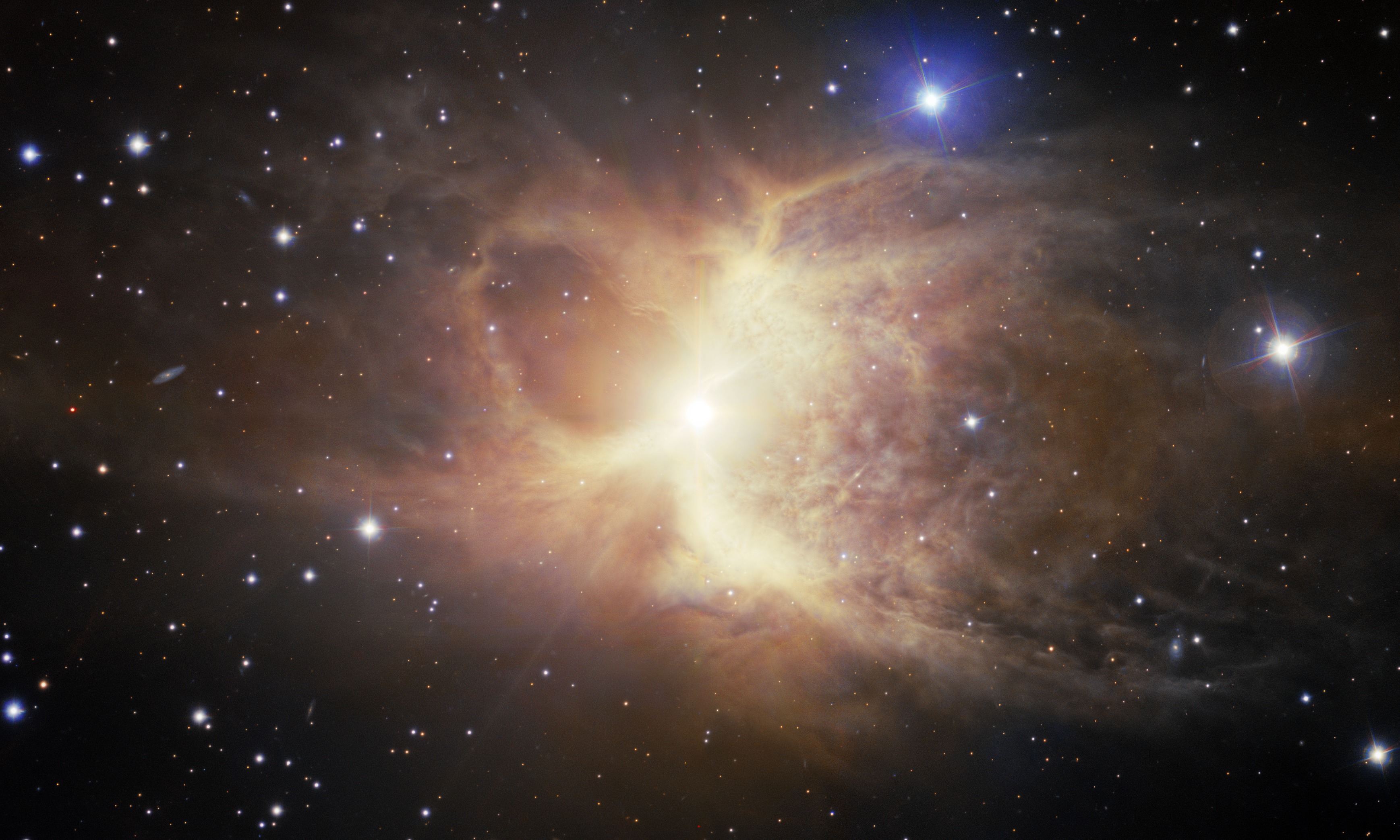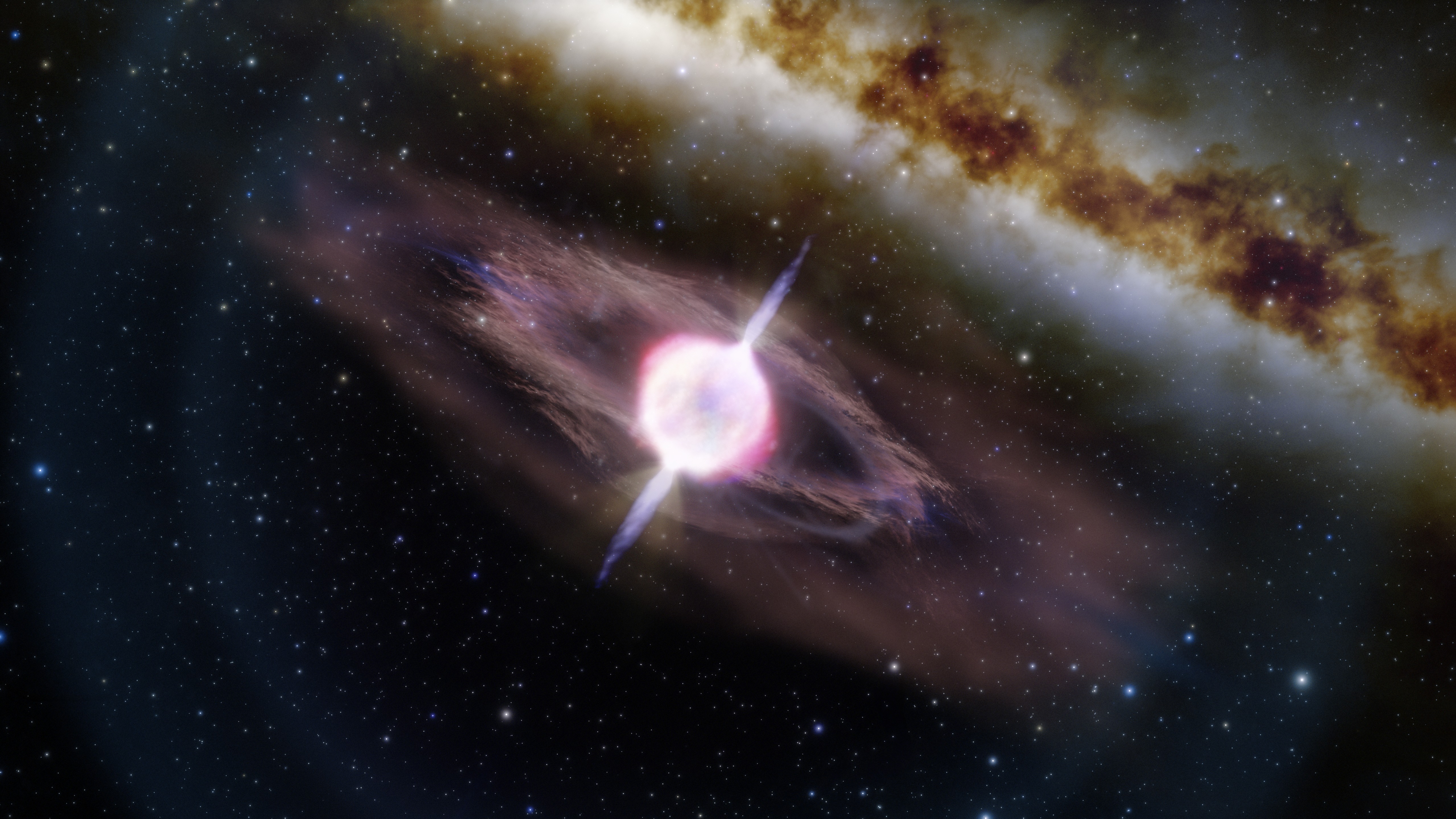Using the Gemini South telescope a team of astronomers have confirmed for the first time that differences in binary stars’ composition can originate from chemical variations in the cloud of stellar material from which they formed.
Tag: Gemini South Telescope
Gemini South Captures Cosmic ‘Cotton Candy’
Gemini South, one half of the International Gemini Observatory operated by NSF’s NOIRLab, captures the billion-year-old aftermath of a spiral galaxy collision. At the heart of this chaotic interaction, entwined and caught in the midst of the chaos, is a pair of supermassive black holes — the nearest pair to Earth ever recorded.
Un algodón de azúcar cósmico visto desde Chile
Desde Chile, utilizando el telescopio de Gemini Sur, la mitad austral del Observatorio Internacional Gemini que opera NOIRLab de NSF y AURA, los astrónomos obtuvieron esta imagen que registra las consecuencias de una colisión de galaxias espirales hace mil millones de años. Al centro de esta caótica interacción se encuentran dos agujeros negros supermasivos, el par más cercano a la Tierra que se haya registrado.

Una jarra cósmica desbordando material estelar
Una serie de nubes simétricas y ondulantes de polvo y gas marcan la agónica muerte de una antigua estrella gigante roja, tal como lo muestra esta imagen obtenida en Chile por el telescopio Gemini Sur, parte del Observatorio Internacional Gemini, operado por AURA y NOIRLab de NSF. La estructura resultante, que se dice se parece a una jarra inglesa de estilo antiguo, es una nebulosa de reflexión bipolar que rara vez es posible de apreciar. La evidencia sugiere que este objeto se formó por las interacciones entre la estrella gigante roja moribunda y una estrella compañera destrozada hace mucho.

Rare, Double-Lobe Nebula Resembles Overflowing Cosmic ‘Jug’
A billowing pair of nearly symmetrical loops of dust and gas mark the death throes of an ancient red-giant star, as captured by Gemini South, one half of the International Gemini Observatory, operated by NSF’s NOIRLab. The resulting structure, said to resemble an old style of English jug, is a rarely seen bipolar reflection nebula. Evidence suggests that this object formed by the interactions between the dying red giant and a now-shredded companion star.

The ‘Brightest of All Time’ Gamma-Ray Burst and Its Ordinary Supernova
A team of astronomers using the Gemini South telescope, one half of the International Gemini Observatory operated by NSF’s NOIRLab, have observed the ‘brightest of all time’ long gamma-ray burst. Using the Gemini South Multi-Object Spectrograph (GMOS), the team found that although GRB 221009A exhibits a jet structure as rare as it is bright, its associated supernova is surprisingly ordinary.

La explosión de rayos gamma “más brillante de todos los tiempos”
Un equipo de astrónomos observó la explosión de rayos gamma “más brillante de todos los tiempos” con el telescopio Gemini Sur, la mitad austral del Observatorio Internacional Gemini que opera NOIRLab de NSF. Gracias al Espectrógrafo Multi Objetos de Gemini Sur (GMOS por sus siglas en inglés), el equipo descubrió que, a pesar que GRB 221009A presentaba una estructura de jet tan inusual como su brillo, su supernova no era nada fuera de lo común.